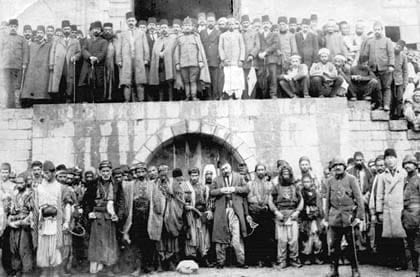Indian Workers Lead with Nationwide Strike

Striking Indian Workers Sept. 2, 2016. Credit: Love & Rage Media
=By= Vijay Prashad
transcript
SHARMINI PERIES, EXEC. PRODUCER, TRNN: It’s The Real News Network. I’m Sharmini Peries, coming to you from Baltimore.On Friday, an estimated 150 million workers refused to show up for work in India and instead took to the streets to demonstrate against labor conditions.
~~~UNIDENTIFIED: We are demanding that ordinary workers should also get a rock-bottom of 18,000 a piece minimum pay, take-home pay, so that they can have a good, a happy family life. We want that every worker should get at least, at the fag-end of their life, 3,000 rupees minimum pension. We want that in–there are many contract employment in perennial nature of jobs. Those jobs should be regularized. And also they should be given protection of social security and job security.
~~~PERIES: The unions involved issued 12 demand to the government of Prime Minister Modi, which included raising the minimum wage, enforcement of labor laws, introduction of universal social security, and a stop to foreign direct investment in railways and national defense. Joining me now to examine all of this is Vijay Prashad. Vijay is the George and Martha Kellner Chair in South Asian History and professor of international studies at Trinity College. He’s the author of many books, including The Death of the Nation and the Future of the Arab Revolution.Vijay, good to have you with us again.
VIJAY PRASHAD: Thanks a lot.
PERIES: So, Vijay, it is estimated that this one-day strike could be one of the largest in history. Workers are clearly unhappy. Will it have any effect on the Modi government?
PRASHAD: Let’s first register what you just said. It’s probably the largest strike in the history of strikes over the last 200 years, up to 150 million people. This is extraordinary. It’s larger than the strike last year, which we thought was very, very robust presence on the street. But the reason I say last year’s strike was robust is that it had minimal impact on the Modi government. The Modi government is hell-bent upon a growth strategy that requires, essentially, crushing labor laws, rolling back labor laws, and seizing, allowing private business to have a larger section of the social surplus produced by these workers. So both in terms of workplace democracy and in terms of the share of the surplus that workers have been demanding in both these directions, the Modi government has tilted firmly with management against labor. So it will not directly influence the Modi government, but it certainly strengthened the confidence of the Indian workers to stand up and not allow this government to basically run roughshod over them.
PERIES: And let’s talk about some of the conditions that these workers are facing that they want fixed by this demonstration.
PRASHAD: Well, the labor laws that the Modi government have put forward have such things as increasing the threshold of hours before overtime can be claimed. Previously the threshold was, say, 50 hours. Now they want to increase it to much higher threshold. So before you even come near that threshold, you cannot claim overtime. At the same time, they are making it very difficult for new labor unions to be formed. It’s important for people to understand that in the Indian labor market, 90 percent of the workers are in the informal sector. That is, they are in the sector outside the ambit of most labor law, and certainly trade unions. This strike, I think, very particularly, in a very focused way, was a strike of all kinds of workers, workers in the formal and informal sector. And both workers in formal and informal sector made it very clear that the demands they were fighting were not merely for formal sector workers, for bank employees or railway employees, etc., but they were also for the women who work in crèches, for instance, the Anganwadi workers who are very, very militant in their opposition to this government because they have been pushed against the wall for the work that they do. So this particular strike is about linking the formal sector workers to the informal sector workers and to fight for the rights of informal sector workers to create trade unions and recognize those trade unions within Indian labor law.
PERIES: And in the demands that was made by the unions, they isolated particularly the foreign direct investment in railways and national defense. Why are these sectors particular to the concerns of the trade union?
PRASHAD: Well, there were three that they picked: railways, insurance, and national defense. And there are several reasons why these are important. The question of national defense of course raises issues of sovereignty. These are political questions, not merely questions of workers’ rights directly. The area of railways and insurance, I think there is a great worry. Railways are one of the largest employers in India and certainly one of the backbones of the formal sector unions. And the increase of foreign investment in railways will come in a very compromising way from labor. It’s going to probably move the workers in the railway industry towards more contractorization, you know, where there’ll be more subcontracted work, there’ll be more so-called casual labor rather than full-time labor. So the unions in the railways are very concerned that the increase of FDI is going to increase casualization of the workforce and the railways. With insurance, I think there’s again the issue of insurance companies from abroad coming in, you know, basically rationalizing their procedures, firing very large numbers of workers. You know, this is again a strong public sector side of the Indian labor market. But again here there’s a political dimension, because there’s a fear that foreign insurance companies will come in, they’ll use the massive pension funds or the casino Wall Street, and not for the betterment or the protection of labor as labor ages. So, for these political and workplace reasons, the unions are very much opposed to foreign direct investment.
PERIES: Now, lastly, Vijay, of course this kind of massive protests in India is resonating throughout the world. We see these kinds of labor protests in France and other parts of the world. Can you link these struggles?
PRASHAD: Well, of course they are in many ways against the kind of neoliberal policy slate that most of the governments around the world follow. But let’s just consider the scale of this. You know, this is about 150-180 million workers who have gone on strike. These are workers from the tea plantations of northern Bengal to the small factories that link Madras to Coimbatore. I mean, this has been across India. This is the largest strike perhaps that we’ve seen in 100 years at least. So the scale is just so gigantic that the comparison at one level is not possible. But certainly the issues that they’re all fighting for are related. You know, one of the striking features of this, Sharmini, is going to be that the press is barely going to report the fact that such a large part of the Indian workforce went on strike. There will be barely a mention of it. And this has got a lot to do with the fact of who owns the press. But I would like to say something to my friends in the press, that many of the newspapers and television channels are also running with labor practices that have been challenged by the Indian trade unions, so they should feel a personal stake in the struggles of the Indian trade unions. Those who work in television channels in France, in the United States, etc., they know what it’s like to have their pensions squeezed, they know what it’s like to get their benefits cut. So that’s precisely what the Indian workers are fighting for. They’re not fighting simply for themselves; they’re fighting to imagine a new dispensation.
PERIES: Alright. And, Vijay, in your article this week on Alternet you made a very important connection between these kinds of labor protests that are going on in India to what’s happening in France. What was the objective in doing that?
PRASHAD: Well, part of it is the idea of backwardness, you know, when in the old colonial days the suggestion was made that the people of the East, whether they are from North Africa, West Asia, South Asia, East Asia, they are somewhat backward to Europeans. And the idea that was put forward is that backwardness was premised on culture, not on material conditions. That was sort of left off the table. And the reason the West largely left that off the table was that they understood that the plunder that the West was conducting in places like India benefited the West, and so to then say let’s create education or drinking water for the Indians would somehow appear criticism of themselves. So they understood backwardness to be simply or merely a cultural phenomenon. So this new debate about burkinis and things like that in France is just a repetition of this old argument that somehow the people of the East are backward in cultural terms. What they don’t want to talk about is that the economic and political policies continue to make people in various parts of the so-called East have a difficult time producing their own futures, their own reality, their own kind of dignity, their own kind of advances. And suffocating them in that way and then criticizing them so-called on cultural grounds is the oldest colonial trick in the book. So when workers rise up in a place like India, they are rising up, I think, not only on the terrain of politics and economics, but also culture, because what they’re saying is, after all, we are human beings and we deserve to be treated like human beings, including how we decide to imagine our way of life.
PERIES: Alright, Vijay. As usual, enlightening. Thank you so much for joining us today.
PRASHAD: Thanks a lot.
PERIES: And thank you for joining us on The Real News Network.
End
Vijay Prashad is the George and Martha Kellner Chair in South Asian History and Professor of International Studies at Trinity College. He is the author of twenty books, including The Death of the Nation and the Future of the Arab Revolution (LeftWord and University of California Press, 2016) and co-editor of Land of Blue Helmets: The UN in the Arab World (University of California Press, 2016) as well as editor of Letters to Palestine: Writers Respond to War and Occupation. Vijay is the Chief Editor of LeftWord Books (leftword.com) and is a columnist for Frontline and AlterNet as well as a frequent contributor to The Hindu, Himal and Counterpunch.
Source: Real News Network.
Note to Commenters
Due to severe hacking attacks in the recent past that brought our site down for up to 11 days with considerable loss of circulation, we exercise extreme caution in the comments we publish, as the comment box has been one of the main arteries to inject malicious code. Because of that comments may not appear immediately, but rest assured that if you are a legitimate commenter your opinion will be published within 24 hours. If your comment fails to appear, and you wish to reach us directly, send us a mail at: editor@greanvillepost.com
We apologize for this inconvenience.
=SUBSCRIBE TODAY! NOTHING TO LOSE, EVERYTHING TO GAIN.=
free • safe • invaluable
[email-subscribers namefield=”YES” desc=”” group=”Public”]
Nauseated by the
vile corporate media?
Had enough of their lies, escapism,
omissions and relentless manipulation?
Send a donation to
The Greanville Post–or
But be sure to support YOUR media.
If you don’t, who will?











